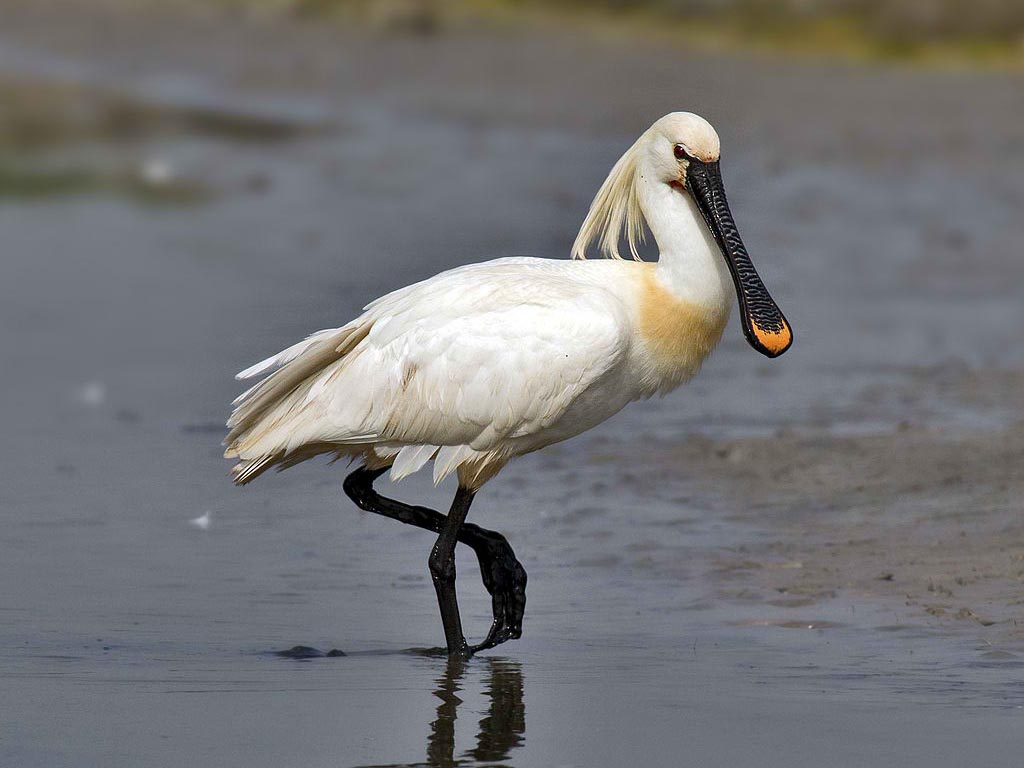Eurasian spoonbill: Red Data Book of Armenia

Spoonbills — Plataleidae
Status. A threatened species. Listed in the Red Data Book of the former USSR. Listed in the IUCN Red List of Threatened Species (ver. 3.1) as Least Concern. According to IUCN criteria categorized as Endangered EN D.
Distribution. Southern Europe, Northeastern Africa, Middle East, Asia Minor, India, Mongolia, China, Russia.
Distribution in Armenia. In the 1930–1940s, it used to be frequently recorded in the basins of the Arax River and the Lake Sevan. In the 1950s, it still nestled in these areas. At present, during migrations it has been recorded on the Lake Arpi, Akhurian Reservoir and in wetlands of Stepanavan. During the nesting season occurs also on the Lake Sevan and the Armash fish ponds.
Habitats. On the Lake Sevan the nesting grounds are destroyed by the shrinkage of the lake. It does not nestle on the banks of Sevjur, in spite of favourable conditions. In 1972–1973, the flocks of 5–10 individuals (up to 10–25 in the Ararat Valley) were recorded during migrations.
Biological traits. Nests are built on trees and shrubs, or in reedbeds. The clutch consists of 2–3 eggs. Hatchlings emerge after 24–25 days of brooding. Currently, nesting in the country is not documented.
Population size and its trends. Drainage of the Lake Gilli and some of the Ararat Valley’s wetlands has led to the destruction of nesting grounds and the reduction of food base.
Major threats. Protected in Sevan National Park and Lake Arpi National Park. It is essential to estimate population size throughout a year, identify the places of gregarization and nesting, and to apply conservation measures.
Suggestions
 The Ministry of Environment sent a letter international partners to draw their attention to the real danger of environmental disasters as a result of Azerbaijan's large-scale aggression towards the territory of Armenia
The Ministry of Environment sent a letter international partners to draw their attention to the real danger of environmental disasters as a result of Azerbaijan's large-scale aggression towards the territory of Armenia
 Vicia pisiformis: Red Data Book of Armenia
Vicia pisiformis: Red Data Book of Armenia
 Vavilovia formosa: Red Data Book of Armenia
Vavilovia formosa: Red Data Book of Armenia
 Trigonella capitata: Red Data Book of Armenia
Trigonella capitata: Red Data Book of Armenia
 Trigonella astroides: Red Data Book of Armenia
Trigonella astroides: Red Data Book of Armenia












